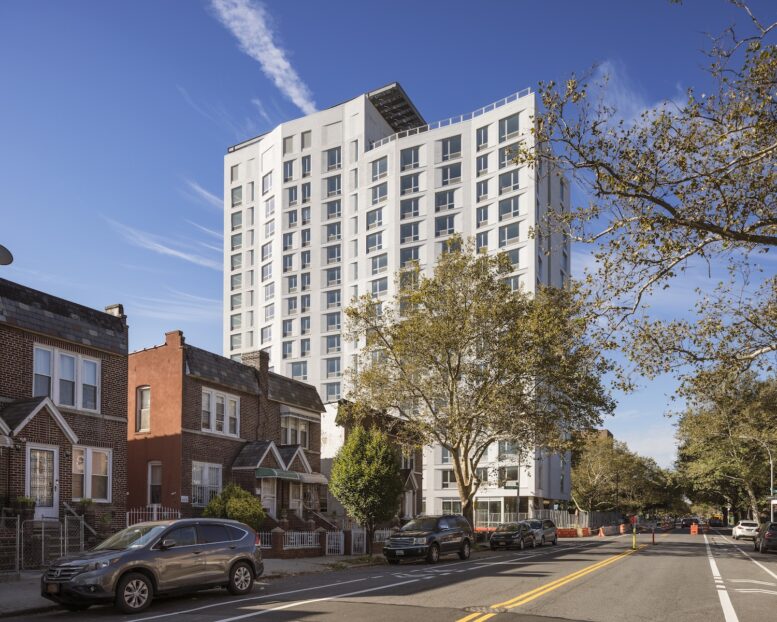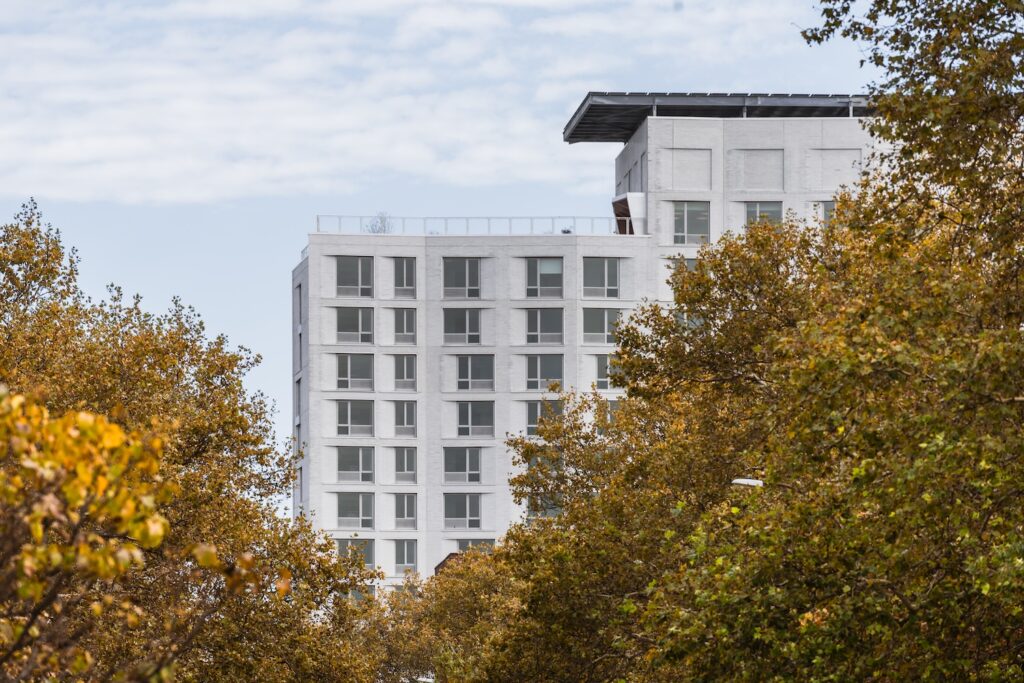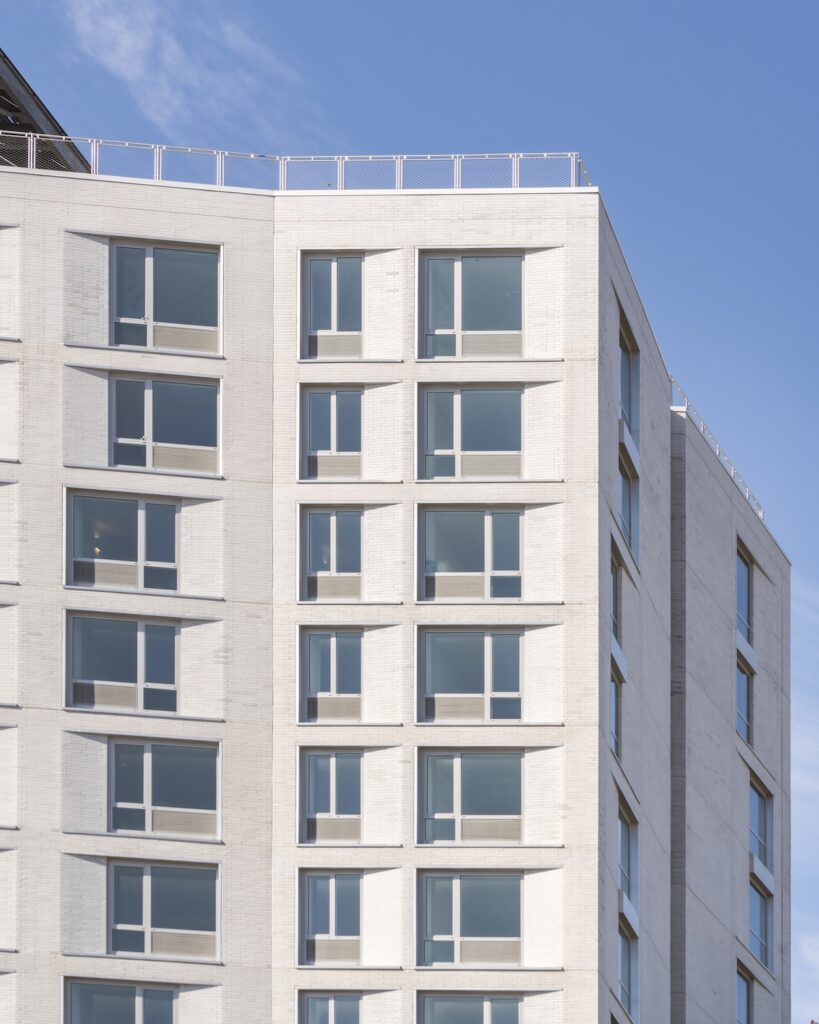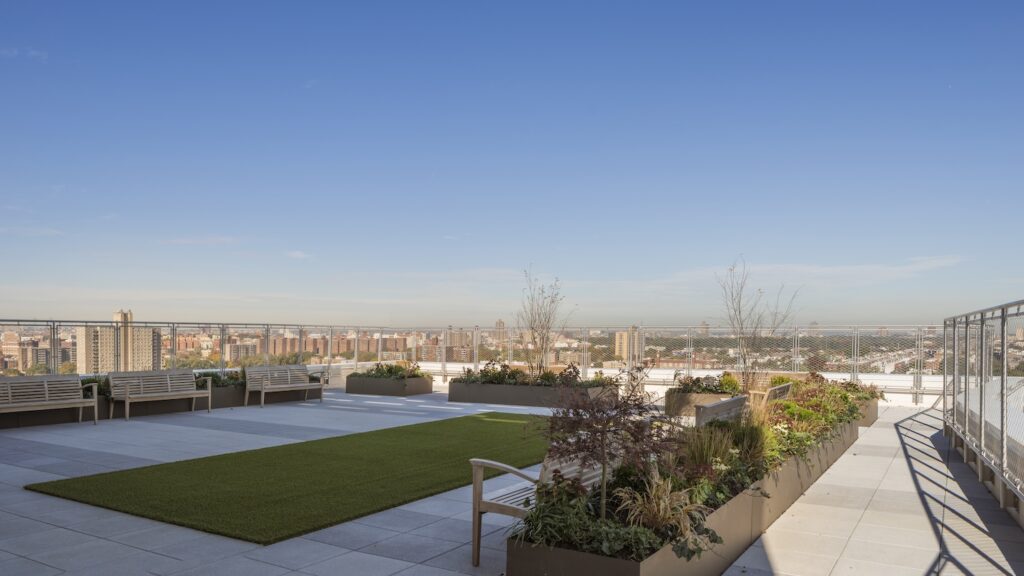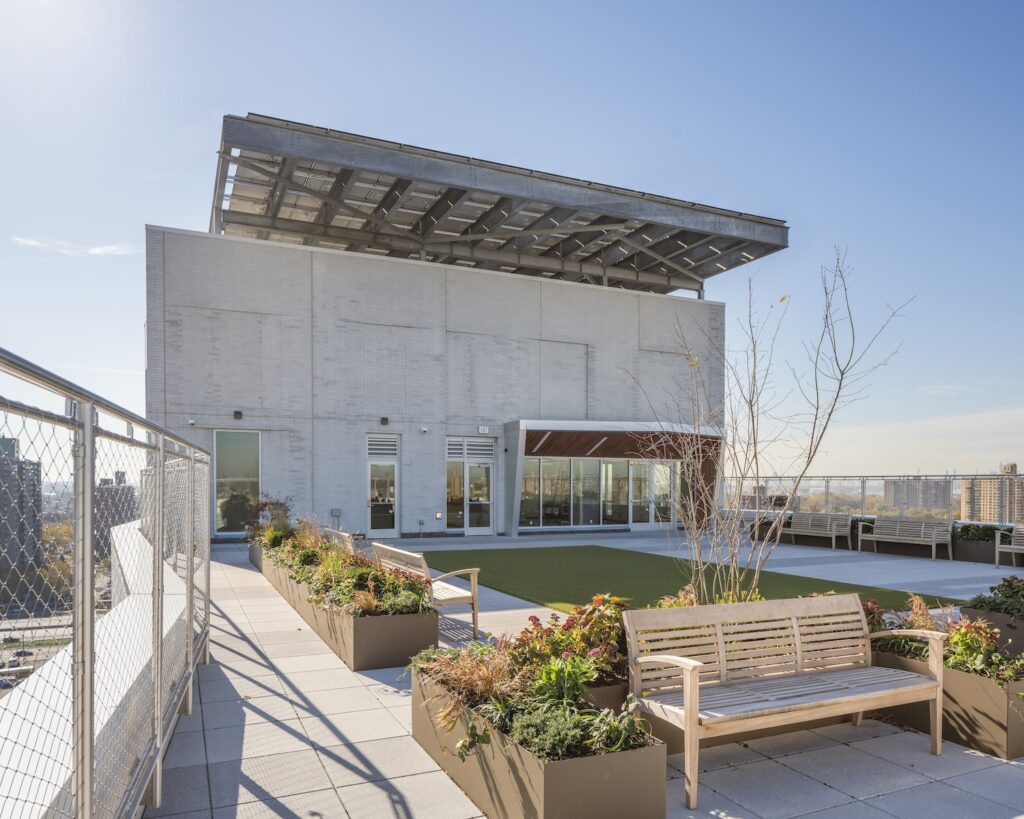Less Than Two Months After Securing Tools in State Budget, Adams Administration Moves Rapidly to Implement Tools to Incentivize More Affordable Housing Through New Construction and Office Conversions
Part of Ongoing Effort by Adams Administration to Achieve Moonshot Goal of 500,000 New Homes Over Next Decade
New York City Mayor Eric Adams and New York City Department of Housing Preservation and Development (HPD) Commissioner Adolfo Carrión announced the implementation of two critically-needed tools to address the city’s housing crisis. The tools — secured as part of the Adams administration’s successful advocacy in Albany this session — will incentivize the construction of multifamily rental construction through a new program called “Affordable Neighborhoods for New Yorkers” (485-x), which replaces the previous 421-a (16) tool, extends the 421-a (16) deadline for projects already underway, and creates a program to incentivize conversion of commercial buildings to affordable homes. The implementation of these tools — paired with the most pro-housing updates in the history of the city’s zoning code through the administration’s “City of Yes for Housing Opportunity” proposal — will help meet demand for new housing and get closer to reaching Mayor Adams’ "moonshot" goal of 500,000 new homes by 2032.
“To meet the challenge of our housing crisis, we need to use every tool in toolbox to complete one simple task: build more,” said Mayor Adams. “The implementation of these new tools in such a short amount of time is another example of the rapid pace in which our administration is moving to deliver affordable housing faster, smarter, and more effectively. But we are not stopping there. ‘City of Yes for Housing Opportunity’ is not only the most ambitious zoning reform in our city’s history but presents another potential tool to help us build our way out of this crisis. Working families need affordable housing now — and we are ready to answer their call.”
"This year, our partners in Albany gave New York City powerful new tools to address the housing crisis, and the city is wasting no time in putting them into action," said Deputy Mayor for Housing, Economic Development, and Workforce Maria Torres-Springer. "The steps we're taking today will encourage new, permanently-affordable housing across the city and new homeownership opportunities across the outer boroughs. Our message to New Yorkers is clear: The Adams administration is using every tool to lower housing costs and deliver for working families.”
“As New Yorkers deal with rising rents due to a historic low in available homes, we must implement every possible tool to build more housing. Our administration’s rapid implementation of these new tools will not only deliver the homes New Yorkers need, but ones they can afford,” said New York City Executive Director of Housing Leila Bozorg. “I am grateful to the incredible public servants at the Department of Housing Preservation and Development and the Housing Development Corporation for their fast, thoughtful, and tireless work to address our housing crisis and deliver for New Yorkers.”
“For more than a year, we worked with our state partners to secure the tools we need,” said HPD Commissioner Carrión Jr. “Now, it’s time to get to work and use those tools to create sorely-needed affordable housing. Our city faces the worst housing shortage in half a century, and we are laser focused on creating more affordable apartments, especially at rents that working New Yorkers, older adults, and the most vulnerable can afford. This city is for all of us — let’s build housing so that it works for everyone.”
“This announcement represents an essential step in our mission to combat New York City’s unprecedented affordable housing shortage,” said New York City Housing Development Corporation President Eric Enderlin. “I want to thank our colleagues in Albany for providing us with the resources that will expand the city’s affordable production and strengthen our ability to meet the housing needs of New Yorkers.”
Affordable Neighborhoods for New Yorkers
485-x Requirements
Affordable Neighborhoods for New Yorkers (485-x) will be implemented by HPD to incentivize the inclusion of permanently affordable and rent stabilized housing in new, multi-family construction projects. Affordability requirements include:
- Rental projects with 150 units or more located in select areas, including Manhattan south of 96th Street, western Queens, and parts of Brooklyn, will require 25 percent of homes to be income restricted at a weighted average of 60 percent of area median income (AMI).
- Rental projects citywide with 100 units or more will require 25 percent of homes to be income restricted at a weighted average of 80 percent of AMI.
- Rental projects citywide ranging from six to 99 units will require 20 percent of homes to be income restricted at a weighted average of 80 percent AMI.
- Rental projects between six and 10 units, outside of Manhattan can opt for a smaller benefit and permanently restrict 50 percent of units.
- Homeownership projects outside of Manhattan with an assessed value of $89 or less per square foot and where homeowners agree to reside in the home.
Through the program, construction workers on large projects of 100 units or more will be guaranteed a minimum of $40 per hour. Workers on projects with 150 units or more built in select areas of Manhattan south of 96th Street, western Queens, and parts of Brooklyn will receive between 60 and 65 percent of prevailing wage or between $63.00 and $72.45 per hour, whichever is less, escalating at 2.5 percent per year. Across the city, building service workers in buildings with 30 units or more will receive prevailing wage.
The program also encourages new homeownership development in the outer boroughs with changes from previous iterations of development incentives designed to encourage family-sized homeownership units.
All projects that intend to participate in 485-x must fill out HPD’s registration forms. Potential applicants must register with HPD within six months of construction commencement. For projects that started construction after June 15, 2022 and prior to April 20, 2024, applicants must register within six months from June 14. HPD expects to officially launch applications for this incentive by the end of the year with the first approvals occurring in 2025.
Extension of 421-a
For new construction projects that commenced construction prior to June 15, 2022, the state budget also extended the completion deadline for qualifying projects seeking 421-a (16) tax benefits from June 15, 2022 to June 15, 2031. For projects that participate in this extension, this change also removed the controversial Options C and G, which allowed all affordable units in a project to be restricted at up to 130 percent AMI for projects that participate in the extension.
To participate in the extension, projects must submit a letter of intent form to HPD within 90 days of the form’s availability. HPD released the Letter of Intent form designating September 12, 2024 the last day to submit an intent to participate in the 421-a (16) extension. Applicants that do not submit within 90 days of today will not be eligible to apply for the 421-a (16) completion extension.
Commercial Conversions
The “Affordable Housing from Commercial Conversion Tax Incentive Benefit” (467-m) program will also be implemented by HPD. Last week, the city released information including an expression of interest form and guidance to inform the establishment of a project’s commencement date. The tax exemption benefit size was structured to encourage owners to start construction quickly to meet the urgency of the housing crisis.
Key eligibility requirements include:
- Conversion of a non-residential property into residential use with six or more apartment units.
- Applying within one year of construction completion.
- Beginning construction between January 1, 2023 and December 31, 2031.
- Completing construction by December 31, 2039.
Affordability requirements include:
- 25 percent of units must be affordable to households with a weighted average of 80 percent AMI or below, with no more than three income tiers .
- Highest income tier is 100 percent AMI and at least 5 percent of affordable units must be 40 percent AMI or below.
- Units must remain permanently affordable.
To encourage the creation of affordable housing quickly, given the urgency of the housing crisis, the program is set up to provide the strongest benefit to developers who join the program and start construction by 2026. The breakdown of tax exemption benefits by start date follows:
- 2026 – 35-year tax exemption
- 2028 – 30-year tax exemption
- 2032 – 25-year tax exemption
The majority of underused office space is located in Manhattan below 96th Street, known as the Manhattan Prime District. This includes many neighborhoods with higher-than-average rents, extremely low rental vacancies, and particularly expensive construction costs associated with the area’s density. In other words, it iss difficult to build new housing in an area that sorely needs new affordable apartments, which is why the program offers the highest tax benefits to conversions in Manhattan below 96th Street. Regardless of location, the tax exemption decreases as the program ages.
Interested developers can learn more about the project and submit an interest form to receive updates from HPD on the status of the program.
Addressing the Housing Crisis
The Adams administration successfully advocated for new tools in this year's New York state budget that will spur the creation of urgently needed housing. These include: a tax incentive program to encourage office conversions to create more affordable units, lifting the arbitrary "floor-to-area ratio" cap that held back affordable housing production in certain high-demand areas of the city, and the ability to create a pilot program to legalize and make safe basement apartments.
Mayor Adams has taken significant action to combat the city’s housing and affordability crisis. Under his leadership, the city financed a record number of new affordable homes in 2023 and is ahead of schedule on a 2024 State of the City commitment to advance two dozen 100-percent affordable housing projects on city-owned land this year through the "24 in '24" initiative. Mayor Adams has also taken steps to cut red tape and speed up the delivery of much-needed housing, including through the Office Conversion Accelerator, an interagency effort to guide buildings that wish to convert through city bureaucracy and other initiatives of the Building and Land Use Approval Streamlining Taskforce.
Earlier this year, Mayor Adams and working-class New Yorkers kicked off the public review on “City of Yes for Housing Opportunity,” the most pro-housing proposal in New York City's history. The proposal would enable the creation of “a little more housing in every neighborhood” through a set of carefully crafted zoning changes — which has not been done in more than half a century — to increase overall housing supply. The New York City Department of City Planning released the draft environmental impact statement of the proposal, which estimates City of Yes for Housing Opportunity could produce as many as 108,850 new homes over the next 15 years.






